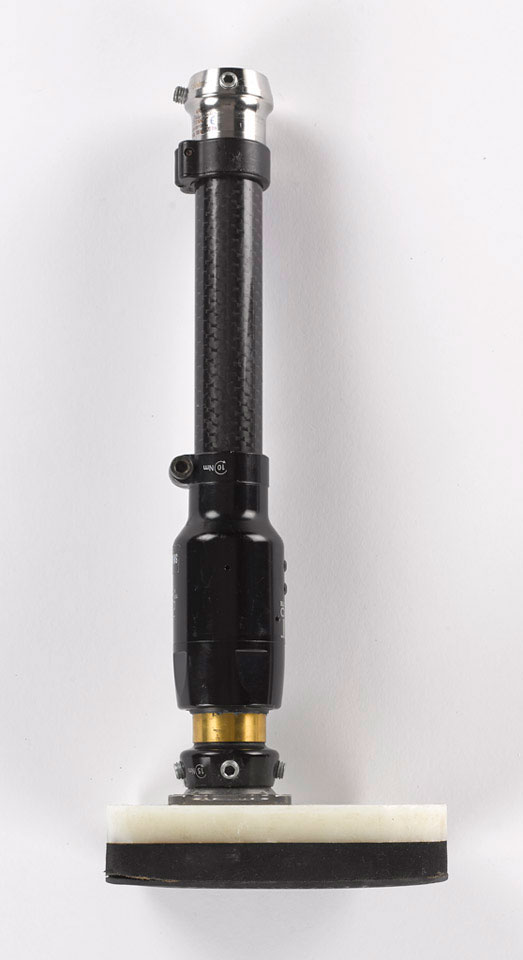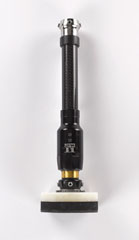
Online Collection
'Stubby' prosthetic leg, 2015 (c)
Manufactured by Blatchford and used at the Defence Medical Rehabilitation Centre, Headley Court, Surrey, 2015 (c).
These are the first prosthetic legs used for all above or through knee double amputees. From 2009, all patients started on these short prosthetic limbs to learn core stability and hip/pelvis control. Amputees were expected to do all their rehab on 'stubbies' rather than using a wheelchair. Patients could be on these prosthetics for a number of months until they could walk on them comfortably and were less reliant on a wheelchair; the move to more sophisticated prosthetic legs would then follow.
Double amputees found 'stubbies' very convenient and tended to use them more and more in their daily life. The stability they offered and their simplicity made them extremely useful around the house and for every day activities. The 'stubbies' have a shock absorber to take out some impact forces; this example has an Endolite TTPRO shock absorber.
Improvised Explosive Devices (IEDs) were widely used by insurgents in Afghanistan and Iraq to inflict lethal and debilitating injuries on Coalition forces during the conflicts that developed after the terrorist attacks on the United States on 11 September 2001. A Ministry of Defence report, 'Amputation Statistics 1 April 2014 - 31 March 2019', published on 1 August 2019, records that from 7 October 2001 to 31 March 2019, 333 UK service personnel, serving in the Afghanistan or Iraq, suffered injuries that included a traumatic or surgical amputation.
NAM Accession Number
NAM. 2019-02-5-1-1
Copyright/Ownership
National Army Museum Copyright
Location
National Army Museum, Study collection
Object URL
https://collection.nam.ac.uk/detail.php?acc=2019-02-5-1-1



